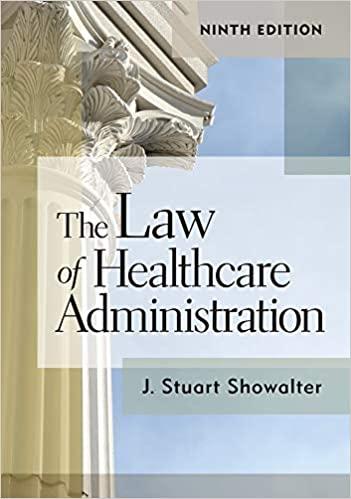Question
Answer all: Marginal analysis and decision-making: Concept: The Fundamental Assumption of Economics All social phenomena emerge from the actions and interactions of individuals who are
Answer all: Marginal analysis and decision-making:
Concept: The Fundamental Assumption of Economics
All social phenomena emerge from the actions and interactions of individuals who are choosing in response to expected marginal benefits and expected marginal costs to themselves.
Definition: Marginal is additional or incremental (amount of increase) or decremental (amount of decrease).
Should I do (choose) activity x?
MC(x) = the additional costs of doing x
MB(x) = the additional benefits of doing x
Rule:
If Expected MB(x) > Expected MC(x), do x; otherwise don't.
Application:
Would an employer ever hire anyone if the expected additional cost of his or her employment were greater than the expected marginal/additional benefit? Of course not, to do so would be irrational.
Assumptions:
In economics, we assume rationality. No one would intentionally harm themselves.
Do businesses have the ability to measure costs? Marginal costs?
How would you use this concept to determine when to get married?
[3/26, 09:31] Festuh: Question:
Consider a family with a mother, father, and two children. Consider the following set of events: A1 = {mother has influenza}; A2 = {father has influenza}; A3 = {first child has influenza}; A4 = {second child has influenza}; B = {at least one child has influenza}; C = {at least one parent has influenza}; D = {at least one family member has influenza}. What does A1 A2 mean?
(a) Either the mother or the father has influenza (b) Both the mother and the father have influenza (c) Neither the mother nor the father has influenza (d) All the family members have influenza
2. Consider a family with a mother, father, and two children. Consider the following set of events: A1 = {mother has influenza}; A2 = {father has influenza}; A3 = {first child has influenza}; A4 = {second child has influenza}; B = {at least one child has influenza}; C = {at least one parent has influenza}; D = {at least one family member has influenza}. Are A3 and A4 mutually exclusive events? (a) Yes (b) No (c) Maybe
3. Consider a family with a mother, father, and two children. Consider the following set of events: A1 = {mother has influenza}; A2 = {father has influenza}; A3 = {first child has influenza}; A4 = {second child has influenza}; B = {at least one child has influenza}; C = {at least one parent has influenza}; D = {at least one family member has influenza}. Express D in terms of B and C (a) D = B or C (b) D = B & C (c) D does not equal B or C
4. Consider a family with a mother, father, and two children. Consider the following set of events: A1 = {mother has influenza}; A2 = {father has influenza}; A3 = {first child has influenza}; A4 = {second child has influenza}; B = {at least one child has influenza}; C = {at least one parent has influenza}; D = {at least one family member has influenza}.
Suppose an influenza epidemic strikes a city. In 10% of families, the mother has influenza. In 10% of families, the father has influenza. In 2% of families, both the mother and father have influenza. Furthermore, suppose each child has a 20% chance of contracting influenza and there is a 10% chance both children become diseased. What is the probability that at least one child will get influenza? (a) 0.1 (b) 0.2 (c) 0.3 (d) 0.4


Step by Step Solution
There are 3 Steps involved in it
Step: 1

Get Instant Access to Expert-Tailored Solutions
See step-by-step solutions with expert insights and AI powered tools for academic success
Step: 2

Step: 3

Ace Your Homework with AI
Get the answers you need in no time with our AI-driven, step-by-step assistance
Get Started


